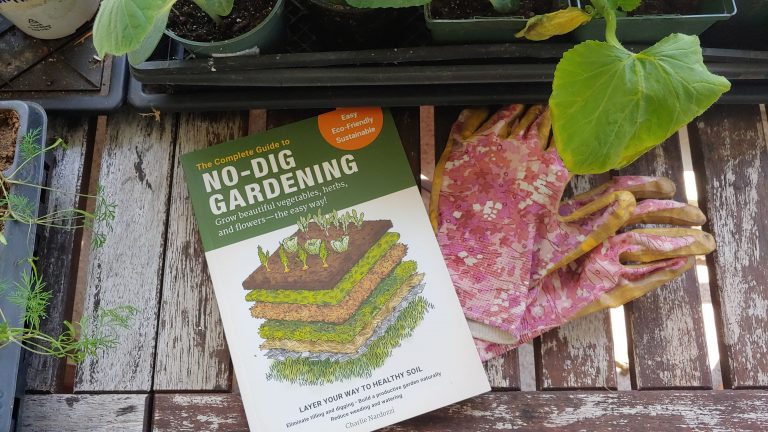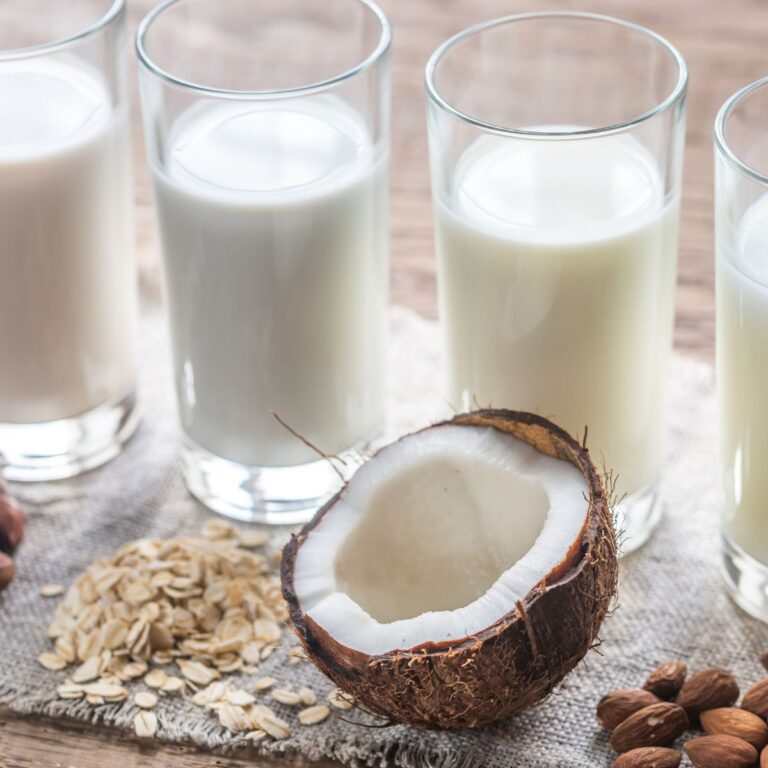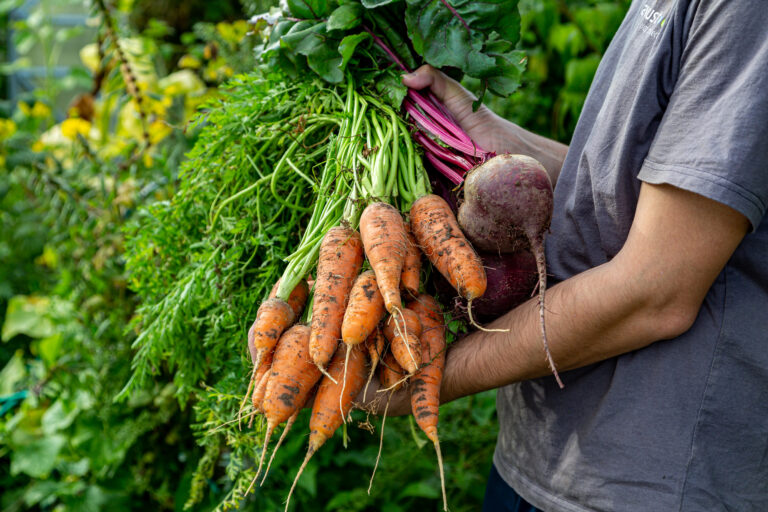This post may contain affiliate links.
The short answer is absolutely! Although it’s not the most common method used for dehydration, you can dehydrate certain foods and herbs in an air fryer.
Air fryers have become quite popular over the past couple of years, with almost everyone having them as a part of their kitchen setup. Why? Because Air fryers promise healthier, oil-free cooking with the crispiness and flavor of deep-frying.
Air fryers work by circulating hot air around the food, which can help remove moisture. But the real beauty of an air fryer (and possibly untapped potential) is its ability to dehydrate.
Let’s get into why dehydrating and drying certain foods in an air fryer is becoming so popular.

What Does it Mean to Dehydrate Food?
To dehydrate food means to remove most (if not all) of the water content from the item. This involves drying out the food, which helps to extend an item’s shelf life and limit spoilage.
Dehydrated food is lightweight, compact, and can be stored for extended periods without refrigeration. Dehydrated foods are popular among homesteaders, campers, and emergency preparedness.
The dehydration process involves exposing the food to low heat and circulating air through natural means like sun drying or specialized equipment like a food dehydrator, oven, and now an air fryer. As the moisture evaporates from the food, it shrinks in size and becomes more robust. While water content varies depending on the type of food, most dehydrated foods typically retain around 20% or less of their original moisture content.
Both air fryers and food dehydrators are kitchen appliances that involve circulating hot air to cook or preserve food.
Common examples of dehydrated foods include fruits like apples, bananas, and berries and vegetables such as carrots, tomatoes, and peppers. Meats like beef, poultry, and fish can also be dehydrated to make jerky. Additionally, grains, legumes, herbs, and spices are often dehydrated for culinary purposes.
Overall, dehydrated food offers a convenient and nutritious option for preserving seasonal produce, reducing food waste, and maintaining a well-stocked pantry.

How to Dehydrate Food Using an Air Fryer
To dehydrate in an air fryer, you would typically need to set the air fryer to a low temperature – usually around 180°F and let the food sit inside for an extended period of time, potentially 1.5-2.5 hours until it reaches the desired level of dehydration.
Ensure that the food items are spread out evenly in the air fryer basket for proper air circulation. Overcrowding can lead to uneven dehydration.
When dehydrating fruits like apples and oranges, you might need to turn them every 30 minutes for best results.
Keep an eye on the food as it dehydrates to prevent over-drying. Some foods may dry faster than others, so check them regularly and remove pieces as they reach the desired level of dehydration.
It is important to note that results may vary, and it might take longer to achieve the desired level of dehydration compared to using a dedicated dehydrator.
The dehydrator I use is this Drew Barrymore Beautiful 3 Qt Air Fryer. It is a fantastic air fryer – that’s also super cute.

Why I love Using an Air Fryer to Dehydrate Food
If you already own an air fryer, you won’t need to add additional kitchen appliances like a dedicated food dehydrator to dry your foods.
Air fryers are typically compact and easy to use, making them convenient for small batches of dehydrated snacks or ingredients.
It is especially great at drying herbs.
While air fryers are great, their main drawback is that they are relatively small compared to dedicated dehydrators. This ultimately limits the amount of food you can dehydrate in one batch and possible uneven dehydration. Investing in a dedicated dehydrator or using the oven may be a better long-term solution for larger batches or more frequent dehydration needs.
Since not all air fryers are created equal, before buying, it’s best to read reviews and descriptions to make sure the specific air fryer can dehydrate.

Why is dehydrating food important in homesteading?
Dehydrating food is an essential aspect of homesteading for several reasons:
- Homesteaders often grow their own fruits, vegetables, and herbs or raise animals for meat. Dehydrating allows them to preserve the abundance of their harvest for use throughout the year.
- There’s no need for refrigeration or freezing, reducing reliance on electricity and other modern conveniences.
- Dehydration is an effective way to prevent surplus produce from going to waste. Instead of allowing fruits, vegetables, and herbs to spoil, homesteaders can dehydrate them for future use.
- Dehydrated food is lightweight, portable, and non-perishable, making it an ideal option for emergency supplies. By dehydrating their food, homesteaders can ensure they have a reliable source of sustenance during challenging times.
Dehydrating food enables food preservation, promotes self-sufficiency, reduces food waste, conserves space, and enhances emergency preparedness. It empowers homesteaders to make the most of their harvests, live more sustainably, and embrace a lifestyle of resilience and independence.
The Difference Between an Air Fryer and a Food Dehydrator
While air fryers and food dehydrators use hot air circulation, they serve different purposes and have distinct features tailored to their respective functions.
An air fryer is multipurpose and ideal for quick, oil-free cooking, while a food dehydrator is dedicated to dehydrating, preserving, and removing moisture from food.
The primary function of an air fryer is to cook food quickly and with less oil, mimicking the results of deep frying without the excess fat. On the other hand, a food dehydrator is specifically designed to remove moisture from food to preserve it for longer periods, concentrating flavors and nutrients in the process.
Air fryers typically have a wider temperature range, allowing higher temperatures for cooking various foods. Food dehydrators usually operate at lower temperatures, optimal for slowly removing moisture from food without cooking it.
Related post: How to Choose a Food Dehydrator
Do all air fryers dehydrate?
Not all air fryers are great candidates for dehydrating foods. It depends on how low in temperature the air fryer can go.
Some models offer dehydration capabilities or can be effectively adapted for dehydrating foods. However, most air fryer companies won’t promote or advertise these options, so you will need to really do your research.
How long will dehydrated food remain fresh?
The shelf life of dehydrated food depends on several factors. It all depends on the type of food, the dehydration process, how it’s stored, and environmental conditions. The rule of thumb is:
- Dehydrated fruits and vegetables can typically last anywhere from 6 months to 1 year when stored in airtight containers or vacuum-sealed bags in a cool, dry, and dark place. Some fruits, like apples and bananas, can last even longer.
- Dehydrated meats, such as jerky, can last several weeks or months. Properly dehydrated and stored jerky can sometimes last up to 6 months or longer.
- Dehydrated herbs and spices can retain their flavor and potency for 1 to 3 years when stored in cool, dry, and dark airtight containers. Ground spices may have a shorter shelf life than whole spices.
- Dehydrated grains and legumes, such as rice, quinoa, lentils, and beans, can last 1 to 2 years or longer when stored in airtight containers in cool, dry, and dark places.
It’s important to regularly check dehydrated foods for signs of spoilage, such as off odors, discoloration, or mold growth. If you notice any signs of spoilage, it’s best to discard the food.






